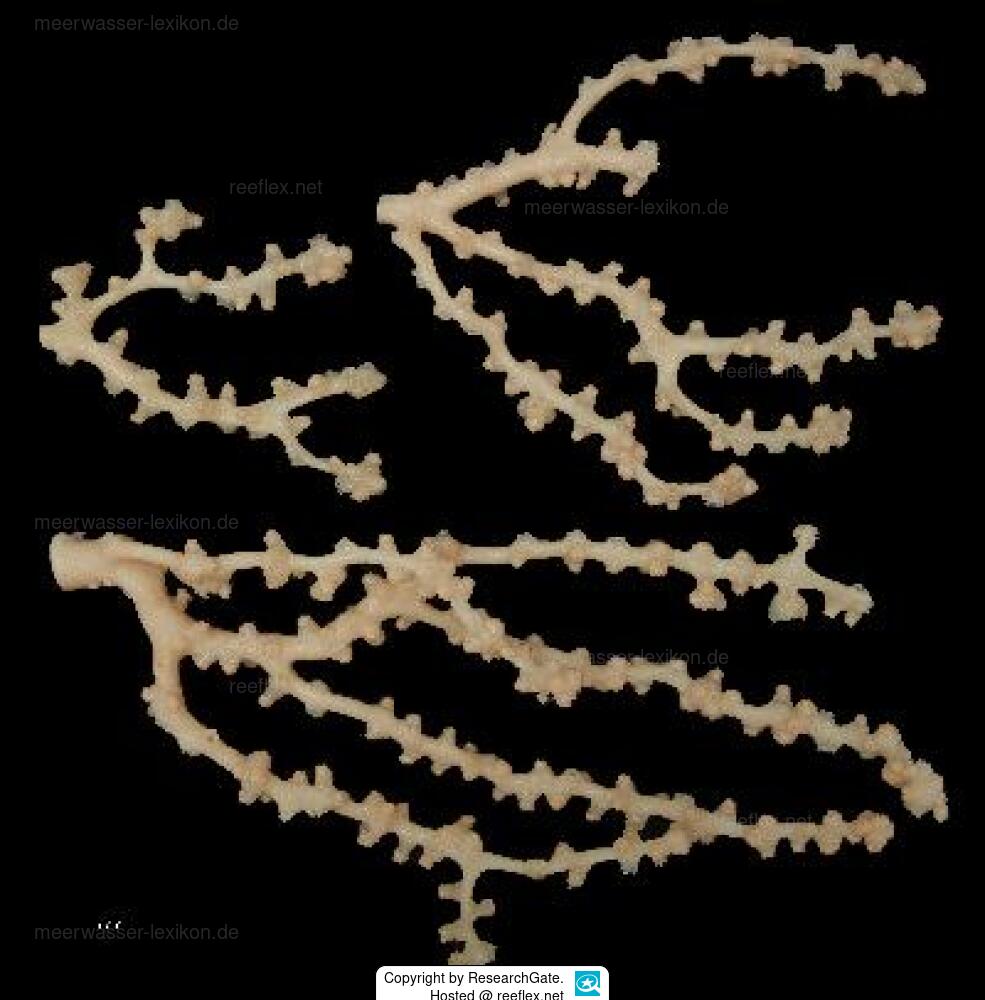Info
The only known colony of Victorgorgia josephinae was collected by the manipulator arm of the ROV Victor.
The general topography of the collection area was a mud-sediment covered plain with scattered boulders.
All blocks (granite and compressed sediment) were colonized by sessile organisms such as sponges, gorgonians (probably from the subfamily Calythrophorinae) and hydrozoans.
Numerous small ophiurids were moving on the surface of the block, and an ophiurid of the genus Asterochema Ørsted & Lütken (Gordon, personal communication) was wrapped around the collected octocoral.
Near the block from which Victorgorgia josephinae was relocated, two gorgonian colonies were observed sessile on the bottom, one probably belonging to the isid genus Acanella, the other similar in morphology to the chrysogorgiid genus Metallogorgia.
An asteroid echinoderm was also observed about 20 cm away on the block where the coral was collected.
Color:
On the videotape and in the color photographs of the live cold-water colony, the coenchyma of Victorgorgia josephinae was yellowish, while the anthocods were purple to deep purple .
Etymology:
The name of the species is derived from the geographical area, Josephine Bank, where the new taxon was discovered.
The general topography of the collection area was a mud-sediment covered plain with scattered boulders.
All blocks (granite and compressed sediment) were colonized by sessile organisms such as sponges, gorgonians (probably from the subfamily Calythrophorinae) and hydrozoans.
Numerous small ophiurids were moving on the surface of the block, and an ophiurid of the genus Asterochema Ørsted & Lütken (Gordon, personal communication) was wrapped around the collected octocoral.
Near the block from which Victorgorgia josephinae was relocated, two gorgonian colonies were observed sessile on the bottom, one probably belonging to the isid genus Acanella, the other similar in morphology to the chrysogorgiid genus Metallogorgia.
An asteroid echinoderm was also observed about 20 cm away on the block where the coral was collected.
Color:
On the videotape and in the color photographs of the live cold-water colony, the coenchyma of Victorgorgia josephinae was yellowish, while the anthocods were purple to deep purple .
Etymology:
The name of the species is derived from the geographical area, Josephine Bank, where the new taxon was discovered.







 ResearchGate
ResearchGate







